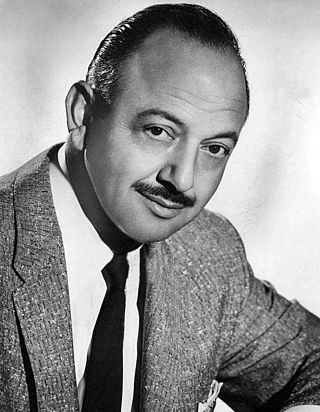
Melvin Jerome Blanc was an American voice actor and radio personality whose career spanned over 60 years. During the Golden Age of Radio, he provided character voices and vocal sound effects for comedy radio programs, including those of Jack Benny, Abbott and Costello, Burns and Allen, The Great Gildersleeve, Judy Canova, and his own short-lived sitcom.

Daffy Duck is a fictional character created by animators Tex Avery and Bob Clampett for Leon Schlesinger Productions. Styled as an anthropomorphic black duck, he has appeared in cartoon series such as Looney Tunes and Merrie Melodies, in which he is usually depicted as a foil for either Bugs Bunny, Porky Pig or Speedy Gonzales. He was one of the first of the new "screwball" characters that emerged in the late 1930s to replace traditional everyman characters who were more popular earlier in the decade, such as Mickey Mouse, Porky Pig, and Popeye.

Porky Pig is an animated character in the Warner Bros. Looney Tunes and Merrie Melodies series of cartoons. He was the first character created by the studio to draw audiences based on his star power, and the animators created many critically acclaimed shorts featuring the character. Even after he was supplanted by later characters, Porky continued to be popular with moviegoers and, more importantly, the Warners directors, who recast him in numerous everyman and sidekick roles.

Sylvester J. Pussycat Sr. is a fictional character, an anthropomorphic cat in the Looney Tunes and Merrie Melodies series of cartoons. Most of his appearances have him often chasing Tweety Bird, Speedy Gonzales, or Hippety Hopper. He appeared in 103 cartoons in the golden age of American animation, lagging only behind superstars Bugs Bunny, Porky Pig, and Daffy Duck. Three of his cartoons won Academy Awards, the most for any starring a Looney Tunes character: they are Tweetie Pie, Speedy Gonzales, and Birds Anonymous.

Petunia Pig is an animated cartoon character in the Looney Tunes and Merrie Melodies series of cartoons from Warner Bros. She looks much like her significant other, Porky Pig, except that she wears a dress and has pigtailed black hair.
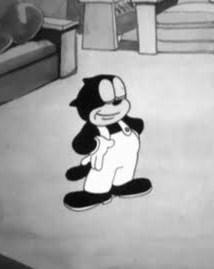
Beans the Cat is an animated cartoon character in the Warner Bros. Cartoons series of cartoons from 1935–1936. Beans was the third Warner Bros cartoon character star after Bosko and Buddy. He is voiced by Billy Bletcher and occasionally by Tommy Bond. He was created by director Friz Freleng. The character was featured in nine cartoons made in 1935 and 1936.

Daffy Duck's Quackbusters is a 1988 animated compilation film featuring classic Warner Bros. Cartoons shorts and animated bridging sequences, starring Daffy Duck. The film was released to theaters by Warner Bros. on September 24, 1988. It was the final theatrical production in which Mel Blanc provided the voices of the various Looney Tunes characters before his death on July 10, 1989.
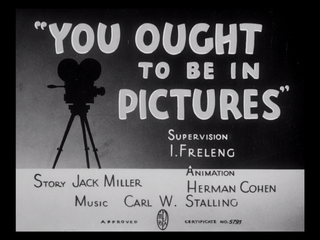
You Ought to Be in Pictures is a 1940 Warner Bros. Looney Tunes short film directed by Friz Freleng. The cartoon was released on May 18, 1940, and stars Porky Pig and Daffy Duck.
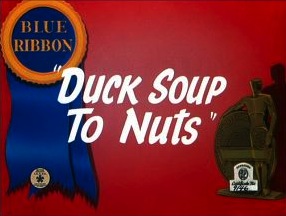
Duck Soup to Nuts is a 1944 Warner Bros. Looney Tunes cartoon directed by Friz Freleng. The cartoon was released on May 27, 1944, and stars Daffy Duck and Porky Pig.

The Looney Looney Looney Bugs Bunny Movie is a 1981 American animated comedy package film with a compilation of classic Looney Tunes/Merrie Melodies Warner Bros. cartoon shorts and animated bridging sequences produced and directed by Friz Freleng, hosted by Bugs Bunny. The new footage was produced by Warner Bros. Animation and the first Looney Tunes/Merrie Melodies film with a compilation of classic cartoon comedy shorts produced by Warner Bros. Animation.
Daffy's Inn Trouble is a 1961 Warner Bros. Looney Tunes theatrical cartoon directed by Robert McKimson and written by David Detiege. The short was released on September 23, 1961, and stars Daffy Duck and Porky Pig.
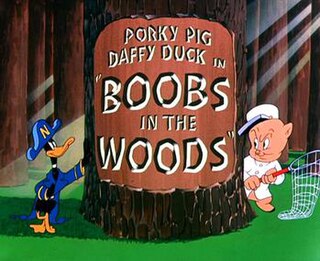
Boobs in the Woods is a 1950 Warner Bros. Looney Tunes cartoon, directed by Robert McKimson. The cartoon was released on January 28, 1950, and stars Daffy Duck and Porky Pig.
This is a list of all cartoons featuring Porky Pig. Directors are listed in parentheses.
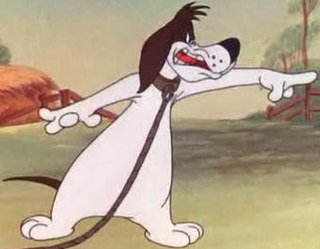
Barnyard Dawg is a Looney Tunes character. A feisty anthropomorphic basset hound, he is a friend and the archenemy of Foghorn Leghorn. He was created by Robert McKimson, who also created Foghorn, and was voiced by Mel Blanc. Dawg also feuds with other enemies as well like Henery Hawk, Daffy Duck and Sylvester. He appeared in 23 Golden Age–era Warner Bros. shorts.
Riff Raffy Daffy is a 1948 Warner Bros. Looney Tunes cartoon directed by Arthur Davis. The cartoon was released on November 27, 1948, and stars Daffy Duck and Porky Pig.

The Looney Tunes Show is an American animated sitcom produced by Warner Bros. Animation, and aired on Cartoon Network for two seasons from May 3, 2011, to November 2, 2013. The series differed from others featuring characters from the Looney Tunes, by focusing on stories conformed around a sitcom format involving the characters of Bugs Bunny and Daffy Duck, who live a surburban life together within a neighbourhood of fellow cartoon neighbours, dealing with various issues in their own way. Both the characters from the Looney Tunes, as well as the Merrie Melodies theatrical cartoon shorts, were given a 21st century update, with episodes also including a musical short; the first series also included computer-animated shorts involving new antics between Wile E. Coyote and the Road Runner.
The Daffy Doc is a 1938 Warner Bros. Looney Tunes cartoon supervised by Bob Clampett. The cartoon was released on November 26, 1938, and stars Porky Pig and Daffy Duck.
Tom Turk and Daffy is a 1944 Warner Bros. Looney Tunes cartoon directed by Chuck Jones. The cartoon was released on February 12, 1944, and stars Porky Pig and Daffy Duck. Michael Maltese and Tedd Pierce are both the writers of the short, and are credited here as "The Staff".













